ąÆą▓ąĄą┤ąĄąĮąĖąĄ ą▓ ąĮąĄąĖąĮčéčĆčāąĘąĖą▓ąĮčŗą╣ čüąĖą│ąĮą░ą╗ąĖąĘą░č鹊čĆ ą┤ą╗čÅ čüą║čĆąĄą▒ą║ąŠą▓
ą×ą▒ąĘąŠčĆ ąĮąĄąĖąĮčéčĆčāąĘąĖą▓ąĮčŗčģ čüąĖą│ąĮą░ą╗ąĖąĘą░č鹊čĆąŠą▓ ą┤ą╗čÅ čüą║čĆąĄą▒ą║ąŠą▓ ą┐čĆąĖ ąŠą▒čüą╗čāąČąĖą▓ą░ąĮąĖąĖ čéčĆčāą▒ąŠą┐čĆąŠą▓ąŠą┤ąŠą▓
ą”ąĄą╗ąŠčüčéąĮąŠčüčéčī čéčĆčāą▒ąŠą┐čĆąŠą▓ąŠą┤ą░ ąĖą╝ąĄąĄčé čĆąĄčłą░čÄčēąĄąĄ ąĘąĮą░č湥ąĮąĖąĄ, ąĖ ąĮąĄąĖąĮčéčĆčāąĘąĖą▓ąĮčŗąĄ čüąĖą│ąĮą░ą╗ąĖąĘą░č鹊čĆčŗ čüą║čĆąĄą▒ą║ąŠą▓ ąĖą│čĆą░čÄčé ą║ą╗čÄč湥ą▓čāčÄ čĆąŠą╗čī ą▓ ąĄąĄ ą┐ąŠą┤ą┤ąĄčƹȹ░ąĮąĖąĖ. ąŁčéąĖ čāčüčéčĆąŠą╣čüčéą▓ą░ ą┐ąŠąĘą▓ąŠą╗čÅčÄčé ąŠą┐ąĄčĆą░č鹊čĆą░ą╝ ąŠą▒ąĮą░čĆčāąČąĖą▓ą░čéčī, ąŠą┐čĆąĄą┤ąĄą╗čÅčéčī ą╝ąĄčüč鹊ą┐ąŠą╗ąŠąČąĄąĮąĖąĄ ąĖ čāą┐čĆą░ą▓ą╗čÅčéčī ąĖąĮčüčéčĆčāą╝ąĄąĮčéą░ą╝ąĖ ąŠčćąĖčüčéą║ąĖ ąĖ ą┐čĆąŠą▓ąĄčĆą║ąĖ čéčĆčāą▒ąŠą┐čĆąŠą▓ąŠą┤ąŠą▓, ąĖąĘą▓ąĄčüčéąĮčŗą╝ąĖ ą║ą░ą║ ┬½čüą║čĆąĄą▒ą║ąĖ┬╗, ą▒ąĄąĘ ąĮąĄąŠą▒čģąŠą┤ąĖą╝ąŠčüčéąĖ ą┐čĆąĄčĆčŗą▓ą░čéčī čĆą░ą▒ąŠčéčā čéčĆčāą▒ąŠą┐čĆąŠą▓ąŠą┤ą░. ąśčģ čüą┐ąŠčüąŠą▒ąĮąŠčüčéčī čĆą░ą▒ąŠčéą░čéčī ą▒ąĄąĘ ąŠčéą║čĆčŗčéąĖčÅ čéčĆčāą▒ąŠą┐čĆąŠą▓ąŠą┤ą░ ąĖą╗ąĖ ą┐čĆąĄčĆčŗą▓ą░ąĮąĖčÅ ą┐ąŠč鹊ą║ą░ 菹║ąŠąĮąŠą╝ąĖčé ą▓čĆąĄą╝čÅ ąĖ čüąĮąĖąČą░ąĄčé čĆąĖčüą║ąĖ, čćč鹊 ą┤ąĄą╗ą░ąĄčé ąĖčģ ą╗čāčćčłąĖą╝ ą▓čŗą▒ąŠčĆąŠą╝ ą┤ą╗čÅ čŹčäč乥ą║čéąĖą▓ąĮąŠą│ąŠ čāą┐čĆą░ą▓ą╗ąĄąĮąĖčÅ čéčĆčāą▒ąŠą┐čĆąŠą▓ąŠą┤ą░ą╝ąĖ.
ąÆą░ąČąĮąŠčüčéčī ąĮąĄąĖąĮčéčĆčāąĘąĖą▓ąĮčŗčģ ą╝ąĄč鹊ą┤ąŠą▓ ą▓ ąĮąĄčäč鹥ą│ą░ąĘąŠą▓ąŠą╣ ąŠčéčĆą░čüą╗ąĖ
ąÆ ąĮąĄčäč鹥ą│ą░ąĘąŠą▓ąŠą╣ ąŠčéčĆą░čüą╗ąĖ ą╝ąĖąĮąĖą╝ąĖąĘą░čåąĖčÅ ą▓čĆąĄą╝ąĄąĮąĖ ą┐čĆąŠčüč鹊čÅ ąĖą╝ąĄąĄčé čĆąĄčłą░čÄčēąĄąĄ ąĘąĮą░č湥ąĮąĖąĄ. ąØąĄąĖąĮčéčĆčāąĘąĖą▓ąĮčŗąĄ ą╝ąĄč鹊ą┤čŗ, čéą░ą║ąĖąĄ ą║ą░ą║ ąĖčüą┐ąŠą╗čīąĘąŠą▓ą░ąĮąĖąĄ čüąĖą│ąĮą░ą╗ąĖąĘą░č鹊čĆąŠą▓ ą┤ą╗čÅ čüą║čĆąĄą▒ą║ąŠą▓, ąŠą▒ąĄčüą┐ąĄčćąĖą▓ą░čÄčé ąĮąĄą┐čĆąĄčĆčŗą▓ąĮčāčÄ čĆą░ą▒ąŠčéčā ą┐čĆąĖ čüąŠą▒ą╗čÄą┤ąĄąĮąĖąĖ ą▓čŗčüąŠą║ąĖčģ čüčéą░ąĮą┤ą░čĆč鹊ą▓ ą▒ąĄąĘąŠą┐ą░čüąĮąŠčüčéąĖ. ą×ąĮąĖ ąĮąĄ č鹊ą╗čīą║ąŠ ą┐čĆąĄą┤ąŠčéą▓čĆą░čēą░čÄčé ą┤ąŠčĆąŠą│ąŠčüč鹊čÅčēąĖąĄ ą┐čĆąŠčüč鹊ąĖ, ąĮąŠ ąĖ ąĘą░čēąĖčēą░čÄčé ąŠą║čĆčāąČą░čÄčēčāčÄ čüčĆąĄą┤čā, čüąĮąĖąČą░čÅ čĆąĖčüą║ čāč鹥č湥ą║ ą▓ąŠ ą▓čĆąĄą╝čÅ č鹥čģąĮąĖč湥čüą║ąŠą│ąŠ ąŠą▒čüą╗čāąČąĖą▓ą░ąĮąĖčÅ. ą¤ąŠ ą╝ąĄčĆąĄ čĆąŠčüčéą░ ąĮąŠčĆą╝ą░čéąĖą▓ąĮčŗčģ čéčĆąĄą▒ąŠą▓ą░ąĮąĖą╣ ąĖ čāčüąĖą╗ąĄąĮąĖčÅ ą▓ąĮąĖą╝ą░ąĮąĖčÅ ą║ ą▓ąŠąĘą┤ąĄą╣čüčéą▓ąĖčÄ ąĮą░ ąŠą║čĆčāąČą░čÄčēčāčÄ čüčĆąĄą┤čā ą▓ąĮąĄą┤čĆąĄąĮąĖąĄ ąĮąĄąĖąĮčéčĆčāąĘąĖą▓ąĮčŗčģ č鹥čģąĮąŠą╗ąŠą│ąĖą╣ čüčéą░ąĮąŠą▓ąĖčéčüčÅ ąĮąĄ ą┐čĆąŠčüč鹊 čāą┤ąŠą▒čüčéą▓ąŠą╝, ą░ ąĮąĄąŠą▒čģąŠą┤ąĖą╝ąŠčüčéčīčÄ.
ą¤ąŠąĮąĖą╝ą░ąĮąĖąĄ ąĮąĄąĖąĮčéčĆčāąĘąĖą▓ąĮąŠą│ąŠ čüąĖą│ąĮą░ą╗ąĖąĘą░č鹊čĆą░ ą┤ą╗čÅ čüą║čĆąĄą▒ą║ąŠą▓
ą¦č鹊 čéą░ą║ąŠąĄ čüąĖą│ąĮą░ą╗ąĖąĘą░č鹊čĆ ą┤ą╗čÅ čüą▓ąĖąĮąĄą╣?
ąĪąĖą│ąĮą░ą╗ąĖąĘą░č鹊čĆ čüą║čĆąĄą▒ą║ą░ ŌĆö čŹč鹊 čāčüčéčĆąŠą╣čüčéą▓ąŠ, ą║ąŠč鹊čĆąŠąĄ ąŠą▒ąĮą░čĆčāąČąĖą▓ą░ąĄčé ą┐čĆąĖčüčāčéčüčéą▓ąĖąĄ čüą║čĆąĄą▒ą║ą░ (ą╝ą░ąĮąŠą╝ąĄčéčĆą░ ą┤ą╗čÅ ąŠčüą╝ąŠčéčĆą░ čéčĆčāą▒ąŠą┐čĆąŠą▓ąŠą┤ą░) ą┐čĆąĖ ąĄą│ąŠ ą┤ą▓ąĖąČąĄąĮąĖąĖ ą┐ąŠ čéčĆčāą▒ąŠą┐čĆąŠą▓ąŠą┤čā. ąŁčéąĖ čāčüčéčĆąŠą╣čüčéą▓ą░ ą┐čĆąĄą┤čāą┐čĆąĄąČą┤ą░čÄčé ąŠą┐ąĄčĆą░č鹊čĆąŠą▓, ą║ąŠą│ą┤ą░ čüą▓ąĖąĮčīčÅ ą┐čĆąŠčģąŠą┤ąĖčé ąŠą┐čĆąĄą┤ąĄą╗ąĄąĮąĮčāčÄ č鹊čćą║čā, ą┐ąŠą╝ąŠą│ą░čÅ čüą╗ąĄą┤ąĖčéčī ąĘą░ ąĄąĄ ą┐čĆąŠą┤ą▓ąĖąČąĄąĮąĖąĄą╝ ąĖ ą┐ąŠą┤čéą▓ąĄčƹȹ┤ą░čéčī ąĄąĄ ą╝ąĄčüč鹊ą┐ąŠą╗ąŠąČąĄąĮąĖąĄ. ąŁč鹊 ąĮąĄąŠą▒čģąŠą┤ąĖą╝ąŠ ą┤ą╗čÅ čŹčäč乥ą║čéąĖą▓ąĮąŠą╣ ąŠčćąĖčüčéą║ąĖ, č鹥čģąĮąĖč湥čüą║ąŠą│ąŠ ąŠą▒čüą╗čāąČąĖą▓ą░ąĮąĖčÅ ąĖ ąŠčüą╝ąŠčéčĆą░ čéčĆčāą▒ąŠą┐čĆąŠą▓ąŠą┤ąŠą▓.
ą×čüąĮąŠą▓ąĮčŗąĄ čäčāąĮą║čåąĖąĖ
ąÜ ąŠčüąĮąŠą▓ąĮčŗą╝ čäčāąĮą║čåąĖčÅą╝ čüąĖą│ąĮą░ą╗ąĖąĘą░č鹊čĆąŠą▓ čüą║čĆąĄą▒ą║ąŠą▓ ąŠčéąĮąŠčüąĖčéčüčÅ čüąĖą│ąĮą░ą╗ąĖąĘą░čåąĖčÅ ąŠ ą┐čĆąĖą▒čŗčéąĖąĖ ąĖ ą▓čŗčģąŠą┤ąĄ čüą║čĆąĄą▒ą║ąŠą▓ ą▓ ąĮą░ąĘąĮą░č湥ąĮąĮčŗčģ č鹊čćą║ą░čģ čéčĆčāą▒ąŠą┐čĆąŠą▓ąŠą┤ą░. ą×ąĮąĖ ą│ą░čĆą░ąĮčéąĖčĆčāčÄčé, čćč鹊 čüą║čĆąĄą▒ąŠą║ ąĮąĄ ąĘą░čüčéčĆčÅąĮąĄčé ąĖą╗ąĖ ąĮąĄ ą┐ąŠč鹥čĆčÅąĄčéčüčÅ, čćč鹊 ąĖą╝ąĄąĄčé čĆąĄčłą░čÄčēąĄąĄ ąĘąĮą░č湥ąĮąĖąĄ ą┤ą╗čÅ ą┐ąŠą┤ą┤ąĄčƹȹ░ąĮąĖčÅ čåąĄą╗ąŠčüčéąĮąŠčüčéąĖ čéčĆčāą▒ąŠą┐čĆąŠą▓ąŠą┤ą░ ąĖ 菹║čüą┐ą╗čāą░čéą░čåąĖąŠąĮąĮąŠą╣ čŹčäč乥ą║čéąĖą▓ąĮąŠčüčéąĖ. ąÜčĆąŠą╝ąĄ č鹊ą│ąŠ, ąŠąĮąĖ ą┐čĆąĄą┤ąŠčüčéą░ą▓ą╗čÅčÄčé čåąĄąĮąĮčŗąĄ ą┤ą░ąĮąĮčŗąĄ, ą║ąŠč鹊čĆčŗąĄ ą╝ąŠą│čāčé ą┐ąŠą╝ąŠčćčī ą▓ ą┐ą╗ą░ąĮąĖčĆąŠą▓ą░ąĮąĖąĖ č鹥čģąĮąĖč湥čüą║ąŠą│ąŠ ąŠą▒čüą╗čāąČąĖą▓ą░ąĮąĖčÅ ąĖ ą╝ąĖąĮąĖą╝ąĖąĘą░čåąĖąĖ ą▓čĆąĄą╝ąĄąĮąĖ ą┐čĆąŠčüč鹊čÅ.
ąóąĖą┐čŗ čüąĖą│ąĮą░ą╗ąĖąĘą░č鹊čĆąŠą▓ ą┤ą╗čÅ čüą║čĆąĄą▒ą║ąŠą▓
ąĪąĖą│ąĮą░ą╗ąĖąĘą░č鹊čĆčŗ ą┤ą╗čÅ čüą║čĆąĄą▒ą║ąŠą▓ ą▒čŗą▓ą░čÄčé čĆą░ąĘąĮčŗčģ čéąĖą┐ąŠą▓, ąĮąŠ ąĮą░ąĖą▒ąŠą╗ąĄąĄ čĆą░čüą┐čĆąŠčüčéčĆą░ąĮąĄąĮąĮąŠąĄ čĆą░ąĘą╗ąĖčćąĖąĄ ąĘą░ą║ą╗čÄčćą░ąĄčéčüčÅ ą▓ č鹊ą╝, čćč鹊 ą╝ąŠą┤ąĄą╗ąĖ čÅą▓ą╗čÅčÄčéčüčÅ ąĖąĮčéčĆčāąĘąĖą▓ąĮčŗą╝ąĖ ąĖ ąĮąĄąĖąĮčéčĆčāąĘąĖą▓ąĮčŗą╝ąĖ.
ąĪčĆą░ą▓ąĮąĄąĮąĖąĄ ąĖąĮčéčĆčāąĘąĖą▓ąĮąŠą│ąŠ ąĖ ąĮąĄąĖąĮčéčĆčāąĘąĖą▓ąĮąŠą│ąŠ čüąĖą│ąĮą░ą╗ąĖąĘą░č鹊čĆą░ ą┤ą╗čÅ čüą║čĆąĄą▒ą║ąŠą▓
ąśąĮčéčĆčāąĘąĖą▓ąĮčŗąĄ čüąĖą│ąĮą░ą╗ąĖąĘą░č鹊čĆčŗ čüą║čĆąĄą▒ą║ą░ čäąĖąĘąĖč湥čüą║ąĖ ą┐čĆąŠąĮąĖą║ą░čÄčé č湥čĆąĄąĘ čüč鹥ąĮą║čā čéčĆčāą▒ąŠą┐čĆąŠą▓ąŠą┤ą░ ąĖ ą╝ąŠą│čāčé ąĮą░ą┐čĆčÅą╝čāčÄ ą║ąŠąĮčéą░ą║čéąĖčĆąŠą▓ą░čéčī čüąŠ čüą║čĆąĄą▒ą║ąŠą╝. ąŁč鹊čé ą╝ąĄč鹊ą┤ ąŠč湥ąĮčī ąĮą░ą┤ąĄąČąĄąĮ, ąĮąŠ čéčĆąĄą▒čāąĄčé ą┐čĆąŠčĆčŗą▓ą░ ą▓ čéčĆčāą▒ąŠą┐čĆąŠą▓ąŠą┤ąĄ, čćč鹊 ą╝ąŠąČąĄčé ą┐čĆąĖą▓ąĄčüčéąĖ ą║ ą┐ąŠč鹥ąĮčåąĖą░ą╗čīąĮčŗą╝ čāč鹥čćą║ą░ą╝ ąĖą╗ąĖ čüą╗ą░ą▒čŗą╝ ą╝ąĄčüčéą░ą╝.
ąĪ ą┤čĆčāą│ąŠą╣ čüč鹊čĆąŠąĮčŗ, ąĮąĄąĖąĮčéčĆčāąĘąĖą▓ąĮčŗąĄ čüąĖą│ąĮą░ą╗ąĖąĘą░č鹊čĆčŗ čüą║čĆąĄą▒ą║ąŠą▓ čĆą░ą▒ąŠčéą░čÄčé čüąĮą░čĆčāąČąĖ čéčĆčāą▒ąŠą┐čĆąŠą▓ąŠą┤ą░. ą×ąĮąĖ ąĖčüą┐ąŠą╗čīąĘčāčÄčé ą╝ą░ą│ąĮąĖčéąĮčŗąĄ, ą░ą║čāčüčéąĖč湥čüą║ąĖąĄ ąĖą╗ąĖ ą▓ąĖą▒čĆą░čåąĖąŠąĮąĮčŗąĄ ą┤ą░čéčćąĖą║ąĖ ą┤ą╗čÅ ąŠą▒ąĮą░čĆčāąČąĄąĮąĖčÅ ą┐čĆąŠčģąŠą┤ą░ čüą▓ąĖąĮčīąĖ. ąŁč鹊čé ą╝ąĄč鹊ą┤ ąĮąĄ čüčéą░ą▓ąĖčé ą┐ąŠą┤ čāą│čĆąŠąĘčā čåąĄą╗ąŠčüčéąĮąŠčüčéčī čéčĆčāą▒ąŠą┐čĆąŠą▓ąŠą┤ą░, ą┐čĆąĄą┤ą╗ą░ą│ą░čÅ ą▒ąŠą╗ąĄąĄ ą▒ąĄąĘąŠą┐ą░čüąĮčŗą╣ ąĖ 菹║ąŠą╗ąŠą│ąĖčćąĮčŗą╣ ą▓ą░čĆąĖą░ąĮčé, ąŠčüąŠą▒ąĄąĮąĮąŠ ą┐ąŠą┤čģąŠą┤čÅčēąĖą╣ ą┤ą╗čÅ čüčĆąĄą┤ čü ą▓čŗčüąŠą║ąĖą╝ ą┤ą░ą▓ą╗ąĄąĮąĖąĄą╝ ąĖą╗ąĖ ą║ąŠą│ą┤ą░ čüąŠą┤ąĄčƹȹĖą╝ąŠąĄ čéčĆčāą▒ąŠą┐čĆąŠą▓ąŠą┤ą░ ą┤ąŠą╗ąČąĮąŠ ąŠčüčéą░ą▓ą░čéčīčüčÅ ąĮąĄąĘą░ą│čĆčÅąĘąĮąĄąĮąĮčŗą╝.
ąóą░ą║ąĖą╝ ąŠą▒čĆą░ąĘąŠą╝, ą▓čŗą▒ąŠčĆ ą╝ąĄąČą┤čā čŹčéąĖą╝ąĖ čéąĖą┐ą░ą╝ąĖ ąĘą░ą▓ąĖčüąĖčé ąŠčé ą║ąŠąĮą║čĆąĄčéąĮčŗčģ čāčüą╗ąŠą▓ąĖą╣ čéčĆčāą▒ąŠą┐čĆąŠą▓ąŠą┤ą░, 菹║čüą┐ą╗čāą░čéą░čåąĖąŠąĮąĮčŗčģ čéčĆąĄą▒ąŠą▓ą░ąĮąĖą╣ ąĖ čüąŠąŠą▒čĆą░ąČąĄąĮąĖą╣ ą▒ąĄąĘąŠą┐ą░čüąĮąŠčüčéąĖ. ąØąĄąĖąĮčéčĆčāąĘąĖą▓ąĮčŗąĄ čüąĖą│ąĮą░ą╗ąĖąĘą░č鹊čĆčŗ ą┤ą╗čÅ čüą║čĆąĄą▒ą║ąŠą▓, ąŠą▒ą╗ą░ą┤ą░čÄčēąĖąĄ ą┐čĆąĄąĖą╝čāčēąĄčüčéą▓ą░ą╝ąĖ ą▓ ąŠą▒ą╗ą░čüčéąĖ ą▒ąĄąĘąŠą┐ą░čüąĮąŠčüčéąĖ ąĖ čŹčäč乥ą║čéąĖą▓ąĮąŠčüčéąĖ, čüčéą░ąĮąŠą▓čÅčéčüčÅ ą▓čüąĄ ą▒ąŠą╗ąĄąĄ ą┐čĆąĄą┤ą┐ąŠčćčéąĖč鹥ą╗čīąĮčŗą╝ ą▓čŗą▒ąŠčĆąŠą╝ ą▓ąŠ ą╝ąĮąŠą│ąĖčģ čüčåąĄąĮą░čĆąĖčÅčģ.
ąĪą┐ąĄčåąĖčäąĖą║ą░čåąĖąĖ
| ąśą╝čÅ | ąØąĄąĖąĮčéčĆčāąĘąĖą▓ąĮčŗą╣ čüąĖą│ąĮą░ą╗ąĖąĘą░č鹊čĆ ą┤ą╗čÅ čüą║čĆąĄą▒ą║ąŠą▓ |
| ąĀą░ą▒ąŠčćą░čÅ č鹥ą╝ą┐ąĄčĆą░čéčāčĆą░ | ŌĆö39,8┬░C/80┬░C |
| ąÆą╗ą░ąČąĮąŠčüčéčī ą┐čĆąĖ 菹║čüą┐ą╗čāą░čéą░čåąĖąĖ | 41%~83% |
| ąóąĖą┐ ą┤ą░čéčćąĖą║ą░ | ą£ą░ą│ąĮąĖčéąĮą░čÅ ąĖąĮą┤čāą║čåąĖčÅ |
| ąóąĖą┐ čüąĖą│ąĮą░ą╗čīąĮąŠą│ąŠ ą┐ąĄčĆąĄą║ą╗čÄčćą░č鹥ą╗čÅ | ąĪą¤ąöąó |
| ąĪą║ąŠčĆąŠčéą░č湥ąĮąĮąŠąĄ ą▓čĆąĄą╝čÅ | ┬▒2 čüąĄą║. |
| ąöąĖą░ą┐ą░ąĘąŠąĮ čüą║ąŠčĆąŠčüč鹥ą╣ ąŠčćąĖčüčéą║ąĖ čüą║čĆąĄą▒ą║ą░ | 0.2-10 ą╝/čü |
| ąĢą╝ą║ąŠčüčéčī ą║ąŠą╝ą╝čāčéą░č鹊čĆą░ | 2ąÉ |
| ąóąĖą┐ čüą▒čĆąŠčüą░ | ąÉą▓č鹊 čāą┐čĆą░ą▓ą╗ąĄąĮąĖąĄ |
| ąóąĖą┐ ą║ą░ą▒ąĄą╗čīąĮąŠą│ąŠ čüąŠąĄą┤ąĖąĮąĄąĮąĖčÅ | M20 * 1,5 ŃĆü 1/2NPT F |
| ąÆąĘčĆčŗą▓ąŠąĘą░čēąĖčēąĄąĮąĮąŠčüčéčī | Exd IICT6 ąōą▒ |
| ąÜą╗ą░čüčü IP | IP65 |
ą¤čĆąŠą╝čŗčłą╗ąĄąĮąĮąŠąĄ ą┐čĆąĖą╝ąĄąĮąĄąĮąĖąĄ
ąØąĄčäč鹥ą│ą░ąĘąŠą▓ą░čÅ ąŠčéčĆą░čüą╗čī
ąÆ ąĮąĄčäč鹥ą│ą░ąĘąŠą▓ąŠą╝ čüąĄą║č鹊čĆąĄ čéčĆčāą▒ąŠą┐čĆąŠą▓ąŠą┤čŗ čÅą▓ą╗čÅčÄčéčüčÅ čüą┐ą░čüą░č鹥ą╗čīąĮčŗą╝ąĖ ą║čĆčāą│ą░ą╝ąĖ, ą┐ąŠ ą║ąŠč鹊čĆčŗą╝ čéčĆą░ąĮčüą┐ąŠčĆčéąĖčĆčāčÄčéčüčÅ čåąĄąĮąĮčŗąĄ čĆąĄčüčāčĆčüčŗ. ąØąĄąĖąĮčéčĆčāąĘąĖą▓ąĮčŗąĄ čüąĖą│ąĮą░ą╗ąĖąĘą░č鹊čĆčŗ čüą║čĆąĄą▒ą║ąŠą▓ ą┐ąŠą╝ąŠą│ą░čÄčé ąŠą▒čüą╗čāąČąĖą▓ą░čéčī čŹčéąĖ čéčĆčāą▒ąŠą┐čĆąŠą▓ąŠą┤čŗ, ą│ą░čĆą░ąĮčéąĖčĆčāčÅ, čćč鹊 čüą║čĆąĄą▒ą║ąĖ, ą║ąŠč鹊čĆčŗąĄ čćąĖčüčéčÅčé ąĖ ą┐čĆąŠą▓ąĄčĆčÅčÄčé čéčĆčāą▒ąŠą┐čĆąŠą▓ąŠą┤čŗ, čāčüą┐ąĄčłąĮąŠ ąĘą░ą▓ąĄčĆčłą░čÄčé čüą▓ąŠąĖ ą╝ą░čĆčłčĆčāčéčŗ. ą×ą┐ąĄčĆą░č鹊čĆčŗ ąĖčüą┐ąŠą╗čīąĘčāčÄčé čŹčéąĖ čüąĖą│ąĮą░ą╗ąĖąĘą░č鹊čĆčŗ ą┤ą╗čÅ ą┐čĆąĄą┤ąŠčéą▓čĆą░čēąĄąĮąĖčÅ ąĘą░čüąŠčĆąŠą▓ ąĖ ą║ąŠąĮčéčĆąŠą╗čÅ ąĖąĘąĮąŠčüą░ ą▓ąĮčāčéčĆąĖ čéčĆčāą▒ąŠą┐čĆąŠą▓ąŠą┤ą░. ąóą░ą║ąŠąĄ čāą┐čĆąĄąČą┤ą░čÄčēąĄąĄ č鹥čģąĮąĖč湥čüą║ąŠąĄ ąŠą▒čüą╗čāąČąĖą▓ą░ąĮąĖąĄ ą┐ąŠą╝ąŠą│ą░ąĄčé ąĖąĘą▒ąĄąČą░čéčī ą┤ąŠčĆąŠą│ąŠčüč鹊čÅčēąĄą│ąŠ čĆąĄą╝ąŠąĮčéą░ ąĖ ą┐čĆąŠčüč鹊ąĄą▓, ą┐ąŠą▓čŗčłą░čÅ čŹčäč乥ą║čéąĖą▓ąĮąŠčüčéčī čĆą░ą▒ąŠčéčŗ.
ąÆąŠą┤ąŠą┐ąŠą┤ą│ąŠč鹊ą▓ą║ą░
ąÆ čüąĖčüč鹥ą╝ą░čģ ą▓ąŠą┤ąŠą┐ąŠą┤ą│ąŠč鹊ą▓ą║ąĖ ą┐ąŠą┤ą┤ąĄčƹȹ░ąĮąĖąĄ čåąĄą╗ąŠčüčéąĮąŠčüčéąĖ čéčĆčāą▒ąŠą┐čĆąŠą▓ąŠą┤ą░ ąĮąĄ ą╝ąĄąĮąĄąĄ ą▓ą░ąČąĮąŠ. ąØąĄąĖąĮčéčĆčāąĘąĖą▓ąĮčŗąĄ čüąĖą│ąĮą░ą╗ąĖąĘą░č鹊čĆčŗ ą┤ą╗čÅ čüą║čĆąĄą▒ą║ąŠą▓ čģąŠčĆąŠčłąŠ ą░ą┤ą░ą┐čéąĖčĆčāčÄčéčüčÅ ą║ čŹčéąĖą╝ čāčüą╗ąŠą▓ąĖčÅą╝, ą┐ąŠą╝ąŠą│ą░čÅ ą▒ąŠčĆąŠčéčīčüčÅ čü ąŠčéą╗ąŠąČąĄąĮąĖčÅą╝ąĖ ąĖ ąŠčüčéą░čéą║ą░ą╝ąĖ, ą║ąŠč鹊čĆčŗąĄ ą╝ąŠą│čāčé ąĮą░ą║ą░ą┐ą╗ąĖą▓ą░čéčīčüčÅ ą▓ ą▓ąŠą┤ąŠčéčĆą░ąĮčüą┐ąŠčĆčéąĮčŗčģ ą╗ąĖąĮąĖčÅčģ. ą×ąĮąĖ ąŠą▒ąĄčüą┐ąĄčćąĖą▓ą░čÄčé ą▒ąĄąĘąŠą┐ą░čüąĮčŗą╣ ąĖ čŹčäč乥ą║čéąĖą▓ąĮčŗą╣ ą╝ąĄč鹊ą┤ ą╝ąŠąĮąĖč鹊čĆąĖąĮą│ą░ ą┐čĆąŠčåąĄčüčüąŠą▓ ąŠčćąĖčüčéą║ąĖ ą▒ąĄąĘ ąĘą░ą│čĆčÅąĘąĮąĄąĮąĖčÅ čüąĖčüč鹥ą╝čŗ ą▓ąŠą┤ąŠčüąĮą░ą▒ąČąĄąĮąĖčÅ, ąŠą▒ąĄčüą┐ąĄčćąĖą▓ą░čÅ čüąŠą▒ą╗čÄą┤ąĄąĮąĖąĄ čüčéą░ąĮą┤ą░čĆč鹊ą▓ ąŠčģčĆą░ąĮčŗ čéčĆčāą┤ą░ ąĖ č鹥čģąĮąĖą║ąĖ ą▒ąĄąĘąŠą┐ą░čüąĮąŠčüčéąĖ.
ą¦ą░čüč鹊 ąĘą░ą┤ą░ą▓ą░ąĄą╝čŗąĄ ą▓ąŠą┐čĆąŠčüčŗ
- ąÜą░ą║ąŠą▓ čüčĆąŠą║ čüą╗čāąČą▒čŗ ąĮąĄąĖąĮčéčĆčāąĘąĖą▓ąĮąŠą│ąŠ čüąĖą│ąĮą░ą╗ąĖąĘą░č鹊čĆą░ ą┤ą╗čÅ čüą║čĆąĄą▒ą║ąŠą▓?
ąÜą░ą║ ą┐čĆą░ą▓ąĖą╗ąŠ, ąĮąĄąĖąĮčéčĆčāąĘąĖą▓ąĮčŗą╣ čüąĖą│ąĮą░ą╗ąĖąĘą░č鹊čĆ čüą║čĆąĄą▒ą║ą░ ą╝ąŠąČąĄčé ą┐čĆąŠčüą╗čāąČąĖčéčī ąŠčé 5 ą┤ąŠ 10 ą╗ąĄčé, ą▓ ąĘą░ą▓ąĖčüąĖą╝ąŠčüčéąĖ ąŠčé čćą░čüč鹊čéčŗ ąĖčüą┐ąŠą╗čīąĘąŠą▓ą░ąĮąĖčÅ ąĖ čāčüą╗ąŠą▓ąĖą╣ ąŠą║čĆčāąČą░čÄčēąĄą╣ čüčĆąĄą┤čŗ. - ąÜą░ą║ ą┐ąŠą│ąŠą┤ą░ ą▓ą╗ąĖčÅąĄčé ąĮą░ čĆą░ą▒ąŠčéčā ąĮąĄąĖąĮčéčĆčāąĘąĖą▓ąĮčŗčģ čüąĖą│ąĮą░ą╗ąĖąĘą░č鹊čĆąŠą▓ ą┤ą╗čÅ čüą║čĆąĄą▒ą║ąŠą▓?
ąŁą║čüčéčĆąĄą╝ą░ą╗čīąĮčŗąĄ č鹥ą╝ą┐ąĄčĆą░čéčāčĆčŗ ąĖ ą▓ą╗ą░ąČąĮąŠčüčéčī ą╝ąŠą│čāčé ą┐ąŠą▓ą╗ąĖčÅčéčī ąĮą░ čĆą░ą▒ąŠčéčā ą┤ą░čéčćąĖą║ą░. ąóąĄą╝ ąĮąĄ ą╝ąĄąĮąĄąĄ, ą▒ąŠą╗čīčłąĖąĮčüčéą▓ąŠ čüąŠą▓čĆąĄą╝ąĄąĮąĮčŗčģ ą░ą│čĆąĄą│ą░č鹊ą▓ čüą┐čĆąŠąĄą║čéąĖčĆąŠą▓ą░ąĮčŗ čéą░ą║, čćč鹊ą▒čŗ ą▓čŗą┤ąĄčƹȹĖą▓ą░čéčī čüčāčĆąŠą▓čŗąĄ ą┐ąŠą│ąŠą┤ąĮčŗąĄ čāčüą╗ąŠą▓ąĖčÅ. - ą£ąŠąČąĮąŠ ą╗ąĖ ąĖčüą┐ąŠą╗čīąĘąŠą▓ą░čéčī ąĮąĄąĖąĮčéčĆčāąĘąĖą▓ąĮčŗąĄ čüąĖą│ąĮą░ą╗ąĖąĘą░č鹊čĆčŗ čüą║čĆąĄą▒ą║ąŠą▓ ą▓ąŠ ą▓čüąĄčģ čéąĖą┐ą░čģ čéčĆčāą▒ąŠą┐čĆąŠą▓ąŠą┤ąŠą▓?
ąöą░, ąŠąĮąĖ čāąĮąĖą▓ąĄčĆčüą░ą╗čīąĮčŗ ąĖ ą╝ąŠą│čāčé ąĖčüą┐ąŠą╗čīąĘąŠą▓ą░čéčīčüčÅ ą▓ čĆą░ąĘą╗ąĖčćąĮčŗčģ čéčĆčāą▒ąŠą┐čĆąŠą▓ąŠą┤ą░čģ, ą▓ą║ą╗čÄčćą░čÅ ąĮąĄčäčéčī, ą│ą░ąĘ ąĖ ą▓ąŠą┤čā, ąĮąĄąĘą░ą▓ąĖčüąĖą╝ąŠ ąŠčé čüąŠą┤ąĄčƹȹĖą╝ąŠą│ąŠ čéčĆčāą▒ąŠą┐čĆąŠą▓ąŠą┤ą░. - ąÜą░ą║ąŠą▓čŗ ą┐ąĄčĆą▓ąŠąĮą░čćą░ą╗čīąĮčŗąĄ ąĘą░čéčĆą░čéčŗ ąĮą░ čāčüčéą░ąĮąŠą▓ą║čā ąĮąĄąĖąĮčéčĆčāąĘąĖą▓ąĮąŠą│ąŠ čüąĖą│ąĮą░ą╗ąĖąĘą░č鹊čĆą░ ą┤ą╗čÅ čüą║čĆąĄą▒ą║ąŠą▓?
ąĪč鹊ąĖą╝ąŠčüčéčī ą▓ą░čĆčīąĖčĆčāąĄčéčüčÅ ą▓ ąĘą░ą▓ąĖčüąĖą╝ąŠčüčéąĖ ąŠčé čĆą░ąĘą╝ąĄčĆą░ čéčĆčāą▒ąŠą┐čĆąŠą▓ąŠą┤ą░ ąĖ ą║ąŠąĮą║čĆąĄčéąĮčŗčģ čéčĆąĄą▒ąŠą▓ą░ąĮąĖą╣, ąĮąŠ ąŠą▒čŗčćąĮąŠ ą▓ą║ą╗čÄčćą░ąĄčé ą▓ čüąĄą▒čÅ čåąĄąĮčā čāčüčéą░ąĮąŠą▓ą║ąĖ ąĖ ą┐ą╗ą░čéčā ąĘą░ čāčüčéą░ąĮąŠą▓ą║čā. - ąÜą░ą║ ąĖąĮč鹥čĆą┐čĆąĄčéąĖčĆąŠą▓ą░čéčī čüąĖą│ąĮą░ą╗čŗ ąŠčé ąĮąĄąĖąĮčéčĆčāąĘąĖą▓ąĮąŠą│ąŠ čüąĖą│ąĮą░ą╗ąĖąĘą░č鹊čĆą░ ąŠčé čüą║čĆąĄą▒ą║ą░?
ąÜą░ąČą┤čŗą╣ čüąĖą│ąĮą░ą╗ čāą║ą░ąĘčŗą▓ą░ąĄčé ąĮą░ ą┐čĆąĖčüčāčéčüčéą▓ąĖąĄ čüą▓ąĖąĮčīąĖ ą▓ ąŠą┐čĆąĄą┤ąĄą╗ąĄąĮąĮąŠą╣ č鹊čćą║ąĄ. ą×ą┐ąĄčĆą░č鹊čĆčŗ ą┤ąŠą╗ąČąĮčŗ ą┐ąŠąĮąĖą╝ą░čéčī čŹčéąĖ čüąĖą│ąĮą░ą╗čŗ, čćč鹊ą▒čŗ ąŠčéčüą╗ąĄąČąĖą▓ą░čéčī ą┤ą▓ąĖąČąĄąĮąĖąĄ čüą║čĆąĄą▒ą║ą░ ąĖ ąŠą▒ąĄčüą┐ąĄčćąĖą▓ą░čéčī čŹčäč乥ą║čéąĖą▓ąĮąŠąĄ č鹥čģąĮąĖč湥čüą║ąŠąĄ ąŠą▒čüą╗čāąČąĖą▓ą░ąĮąĖąĄ čéčĆčāą▒ąŠą┐čĆąŠą▓ąŠą┤ą░.
ąÆ čŹčéąĖčģ čĆą░ąĘą┤ąĄą╗ą░čģ ą┐čĆąĄą┤čüčéą░ą▓ą╗ąĄąĮą░ ą▓ą░ąČąĮą░čÅ ąĖąĮč乊čĆą╝ą░čåąĖčÅ ąŠ ą┐čĆą░ą║čéąĖč湥čüą║ąŠą╝ ą┐čĆąĖą╝ąĄąĮąĄąĮąĖąĖ ąĮąĄąĖąĮčéčĆčāąĘąĖą▓ąĮčŗčģ čüąĖą│ąĮą░ą╗ąĖąĘą░č鹊čĆąŠą▓ ą┤ą╗čÅ čüą║čĆąĄą▒ą║ąŠą▓ ą▓ ą║čĆąĖčéąĖč湥čüą║ąĖ ą▓ą░ąČąĮčŗčģ ąŠčéčĆą░čüą╗čÅčģ ą┐čĆąŠą╝čŗčłą╗ąĄąĮąĮąŠčüčéąĖ ąĖ ąŠčéą▓ąĄčéčŗ ąĮą░ čĆą░čüą┐čĆąŠčüčéčĆą░ąĮąĄąĮąĮčŗąĄ ą▓ąŠą┐čĆąŠčüčŗ, ą║ąŠč鹊čĆčŗąĄ ą╝ąŠą│čāčé ą┐ąŠą╝ąŠčćčī ą┐ąŠą╗čīąĘąŠą▓ą░č鹥ą╗čÅą╝ ą┐čĆąĖąĮąĖą╝ą░čéčī ąŠą▒ąŠčüąĮąŠą▓ą░ąĮąĮčŗąĄ čĆąĄčłąĄąĮąĖčÅ ąŠ čüčéčĆą░č鹥ą│ąĖčÅčģ čāą┐čĆą░ą▓ą╗ąĄąĮąĖčÅ čéčĆčāą▒ąŠą┐čĆąŠą▓ąŠą┤ą░ą╝ąĖ.


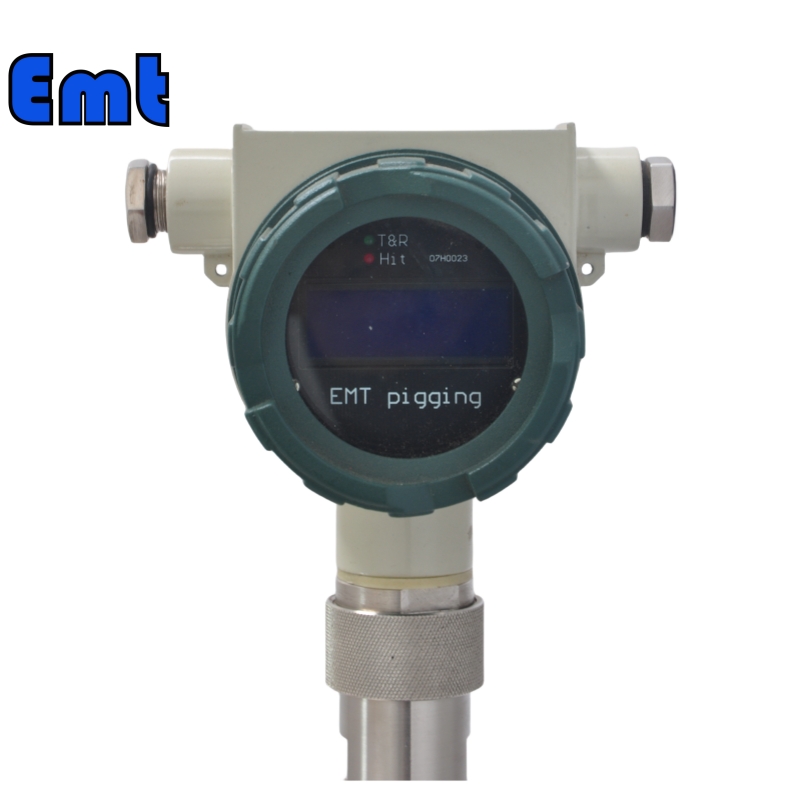


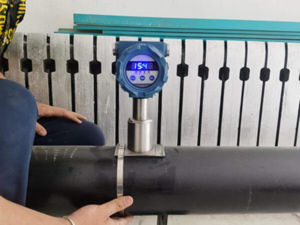
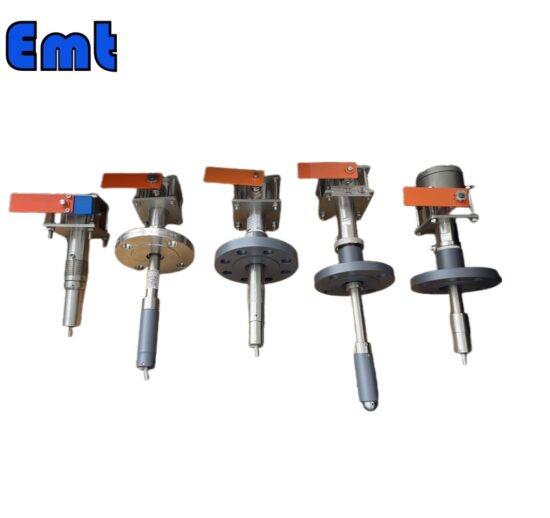
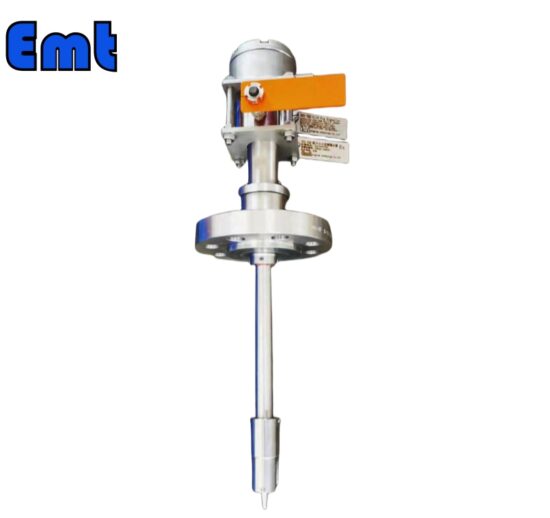
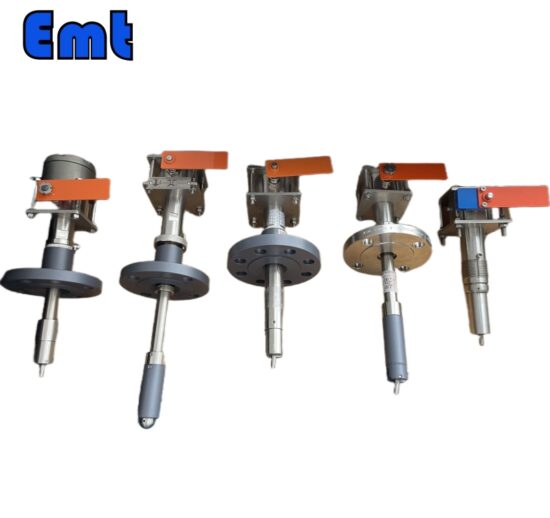
ą×čéąĘčŗą▓ąŠą▓ ą┐ąŠą║ą░ ąĮąĄčé.